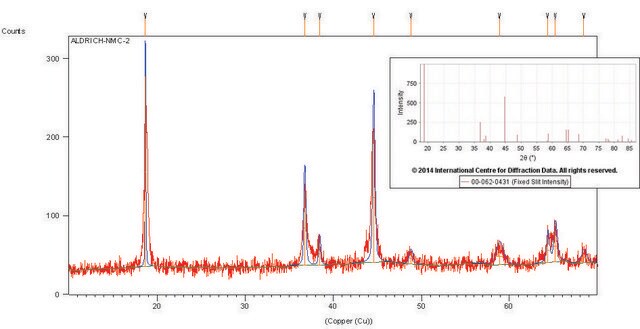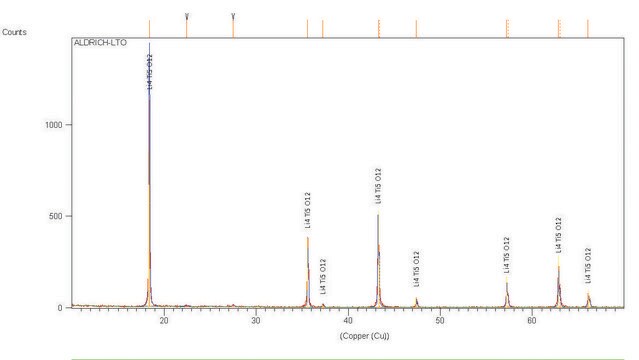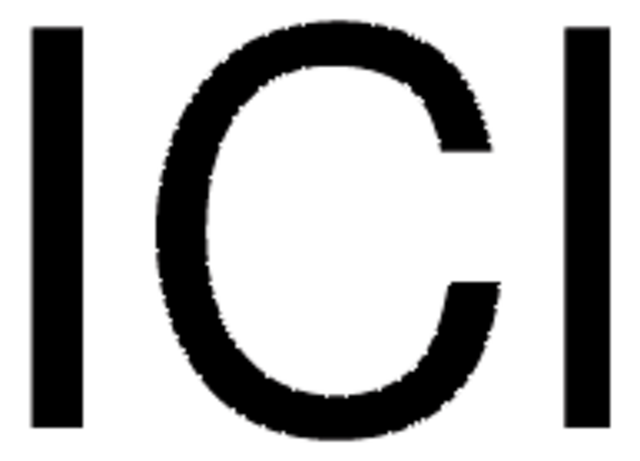765155
Lithium titanate
spinel, electrode sheet, aluminum substrate, size 5 in. × 10 in.
Synonym(s):
LTO, Lithium titanate spinel oxide
About This Item
Recommended Products
grade
battery grade
description
Nominal Voltage: 1.5 V, Li/Li+
Assay
≥98%
form
sheet
composition
loading, ≥80%
greener alternative product characteristics
Design for Energy Efficiency
Learn more about the Principles of Green Chemistry.
sustainability
Greener Alternative Product
extent of labeling
≥80% loading
size
5 in. × 10 in.
thickness
25-50 μm
particle size
1.5-3 μm (typical)
capacity
150 mAh/g(minimum)
160 mAh/g(nominal at 0.1C)
mp
>1000 °C
application(s)
battery manufacturing
greener alternative category
SMILES string
[Li+].[Li+].[Li+].[Li+].[O-][Ti](=O)O[Ti](O[Ti]([O-])=O)(O[Ti]([O-])=O)O[Ti]([O-])=O
InChI
1S/4Li.12O.5Ti/q4*+1;;;;;;;;;4*-1;;;;;
InChI key
BNQVSKURWGZJMY-UHFFFAOYSA-N
Looking for similar products? Visit Product Comparison Guide
General description
Application
Other Notes
Operating Condiditons:
- Recommended maximum charge voltage: 3.0 V vs Li/Li+
- Recommended maximum charge current: 5 C
- Recommended cut-off voltage for discharge: 1.0 V vs Li/Li+
- Recommended maximum discharge current: 10 C
Storage Class Code
11 - Combustible Solids
WGK
WGK 3
Certificates of Analysis (COA)
Search for Certificates of Analysis (COA) by entering the products Lot/Batch Number. Lot and Batch Numbers can be found on a product’s label following the words ‘Lot’ or ‘Batch’.
Already Own This Product?
Find documentation for the products that you have recently purchased in the Document Library.
Articles
Professor Qiao’s laboratory lays out recent advances in conversion type lithium metal fluoride batteries. This review explores key concepts in developing electrochemically stable microstructures for wide Li-ion insertion channels.
The critical technical challenges associated with the commercialization of electric vehicle batteries include cost, performance, abuse tolerance, and lifespan.
Lithium-ion batteries (LIBs) have been widely adopted as the most promising portable energy source in electronic devices because of their high working voltage, high energy density, and good cyclic performance.
Due to the adverse impact of the continued use of fossil fuels on the earth’s environment and climate, researchers have been asked to develop new approaches for producing power using renewable sources like wind and solar energy
Our team of scientists has experience in all areas of research including Life Science, Material Science, Chemical Synthesis, Chromatography, Analytical and many others.
Contact Technical Service








